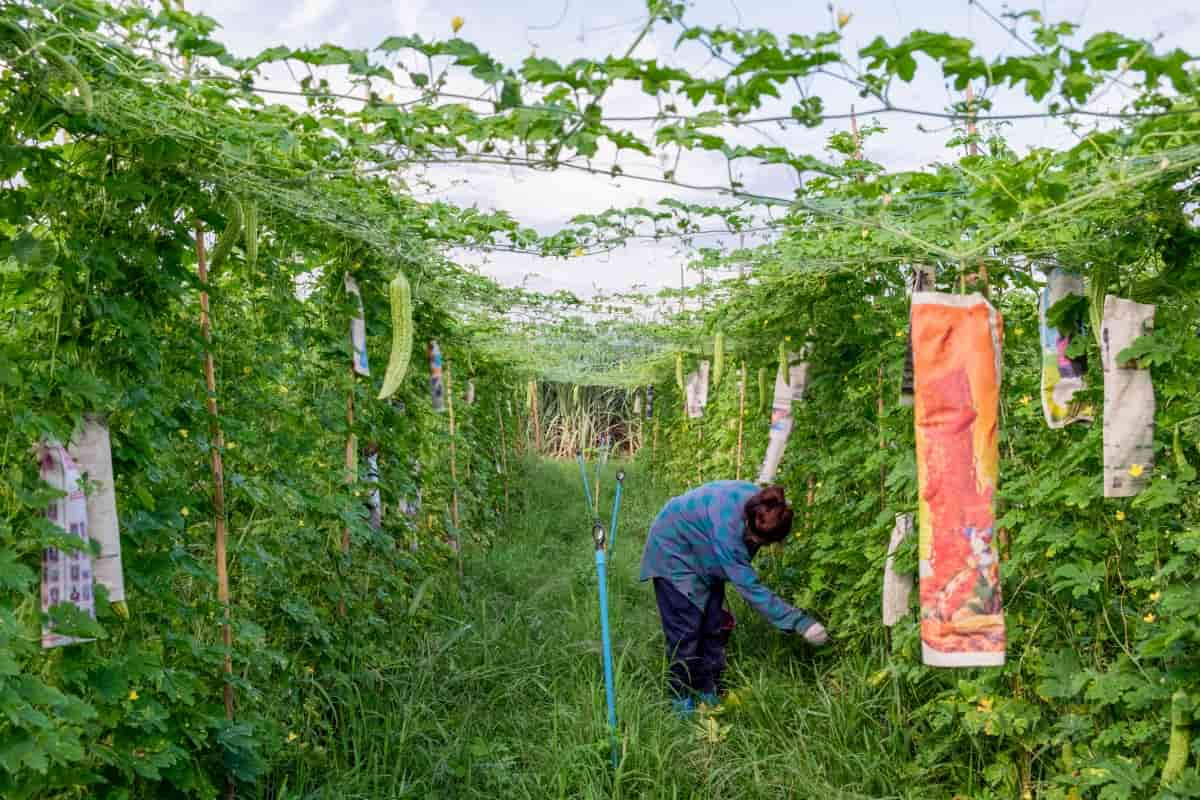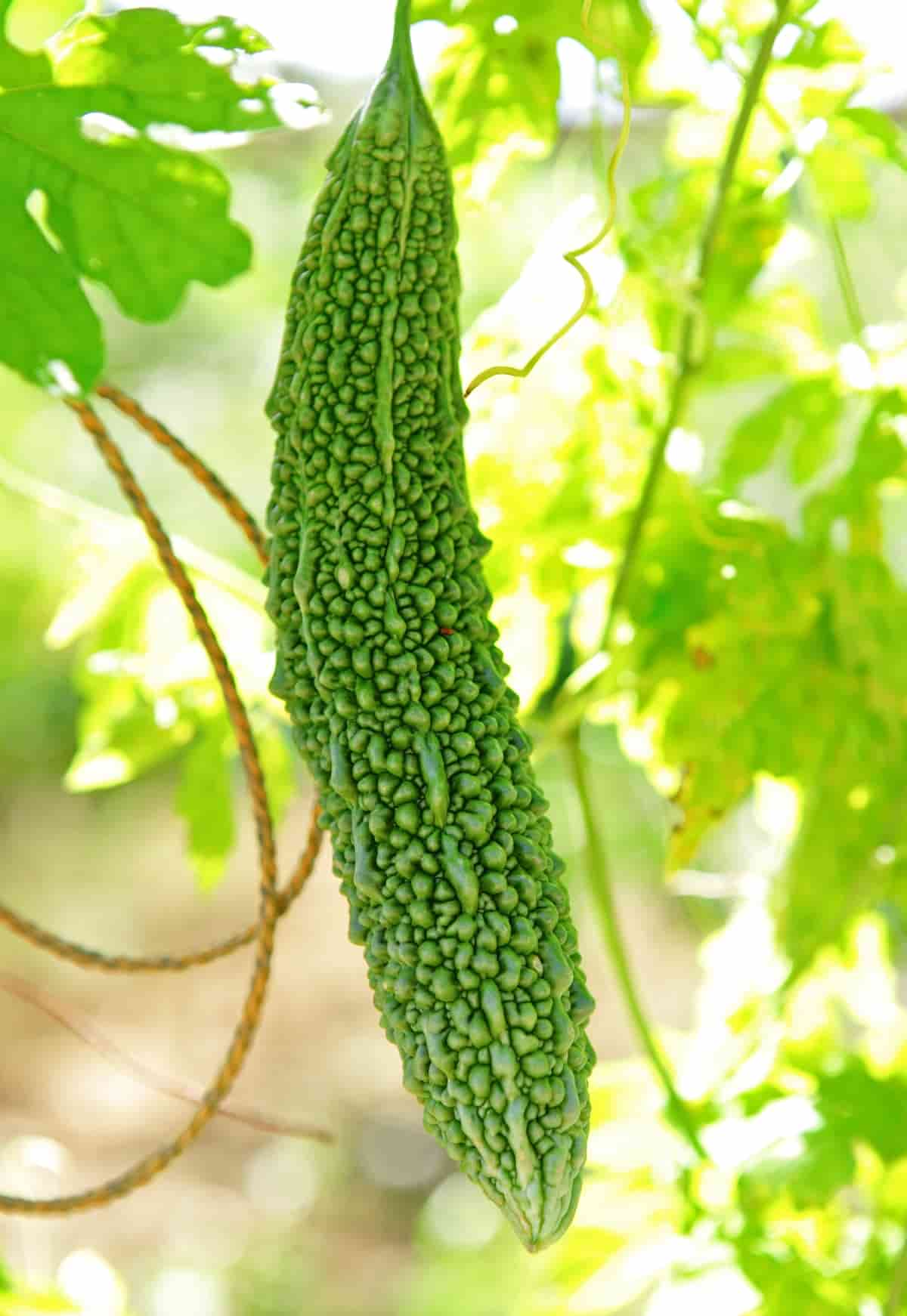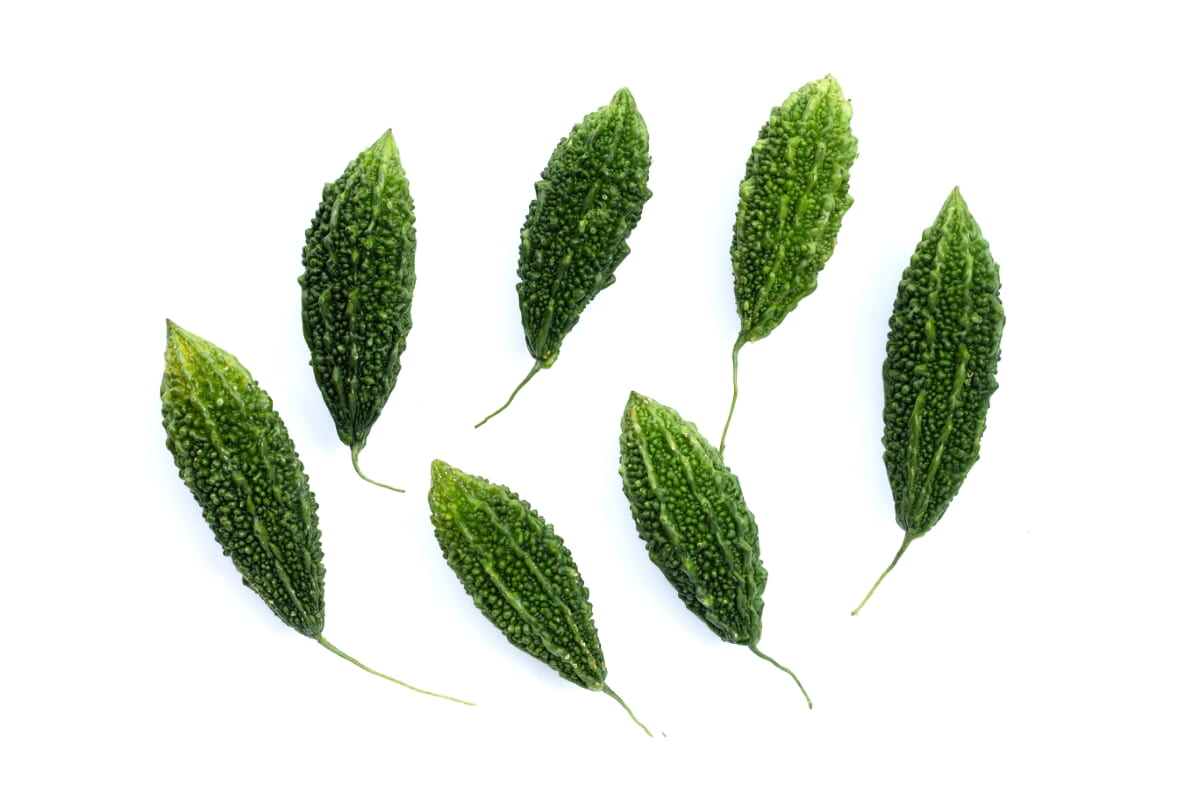Embarking on a journey into bitter gourd cultivation demands a vigilant approach to disease management. This blog explores effective control and treatment strategies, offering insights into combating prevalent diseases and ensuring the vitality of bitter gourd crops.

Bitter Gourd Disease Management
Overview of Bitter Gourd Diseases
Bitter gourd, a member of the cucurbit family, is susceptible to diseases like anthracnose, gummy stem blight, bacterial wilt, root-knot nematodes, powdery mildew, downy mildew, fusarium wilt, and cucumber mosaic virus. These diseases cause symptoms on leaves, stems, roots, and fruits and can spread through seeds, soil, water, insects, or tools, making them difficult to control once established.
Common Diseases in Bitter Gourd Cultivation
Powdery mildew, downy mildew, Fusarium wilt, cucumber mosaic virus (CMV), anthracnose disease, gummy stem blight, bacterial wilt, and root-knot nematodes are fungal diseases that can cause stunted growth, reduced fruit quality, and distorted fruits. Management involves proper spacing, ventilation, fungicidal treatments, crop rotation, resistant varieties, and proper sanitation practices.
Symptoms include white powdery spots, stunted growth, reduced fruit quality, and bacterial ooze from cut stems. Using disease-free seeds, biocontrol agents, and resistant varieties can help manage these diseases.
Impact on Yield and Quality
Bitter gourd yield and quality are affected by various factors, including infection severity, plant growth stage, environmental conditions, and cultivar resistance. Root or vascular diseases cause more damage, impairing water and nutrient uptake, stunting growth and reducing fruit production. Fruit diseases also affect marketability, shelf life, nutritional value, and medicinal value.
Powdery Mildew in Bitter Gourd
One of the most widespread diseases in bitter gourd is powdery mildew, caused by the fungus Podosphaera xanthii. This disease affects the leaves, stems, and fruits of the plant, causing white, powdery patches on the surface. The infected parts may become distorted, yellow, or brown and eventually dry up and fall off. Powdery mildew can reduce the photosynthesis and growth of the plant, as well as the quality and quantity of the fruits.
Symptoms and Identification
Powdery mildew is a fungi that causes whitish powdery growth on both sides of the bitter gourd plant’s leaves, stems, and fruits, which can spread across wide regions. Infected leaves may bend, twist, or shrink, and the fruits may become distorted or discolored.
Management and Control Measures
- Choosing resistant or tolerant varieties of bitter gourd
- Planting in well-drained soil with adequate spacing and aeration
- Avoiding excessive nitrogen fertilization and irrigation
- Removing and destroying infected plant parts and debris
- Practicing crop rotation and intercropping with non-host plants
Downy Mildew Disease
Downy mildew, a common disease in bitter gourd cultivation, is caused by Pseudoperonospora cubensis, affecting the plant’s leaves with yellow or pale green spots, causing them to dry up and fall off. This can reduce photosynthesis, plant vigor, and fruit yield and quality.
Causative Pathogen and Disease Cycle
Pseudoperonospora cubensis, a causative pathogen of downy mildew, produces sporangia, spores produced on specialized structures called sporangiophores. These spores germinate and infect leaves through stomata or wounds, with the infection cycle completed when new sporangiophores emerge from the lower surface of the infected leaves.
Prevention and Treatment Strategies
- Selecting resistant or tolerant varieties.
- Planting in well-drained soil with adequate spacing and aeration.
- Avoid overhead irrigation and dew formation.
- Destroying infected plant parts and debris.
- Practicing crop rotation and intercropping with non-host plants.
- Spraying fungicides and applying biocontrol agents.
- Using botanical extracts for enhanced plant immunity.
Fusarium Wilt in Bitter Gourd
Fusarium wilt is a severe disease in bitter gourd cultivation caused by the soil-borne fungus Fusarium oxysporum f. sp. momordicae. It causes vascular system wilting, yellowing, and browning of leaves, stems, and roots, leading to plant collapse or poor-quality fruit production.
In case you missed it: Ear Cockle Disease of Wheat: Symptoms, Identification, Control, and Treatment

Early Detection and Disease Progression
- Wilting of lower and upper leaves.
- Yellowing and browning of leaf margins and veins.
- Browning and decay of stem near the soil line.
- Browning and disintegration of vascular tissues in stem and root.
- Stunting and distortion of plant growth.
- Reduced or no fruit production.
- White or pink fungal growth on stem or root surface.
- Reddish-brown or black spores in vascular tissues.
Integrated Disease Management Approaches
- Selecting resistant or tolerant varieties.
- Planting in well-drained, organic, pH-adequate soil.
- Avoiding root injury or stress.
- Destroying infected parts and debris.
- Sterilizing soil or irrigation water.
- Applying biocontrol agents like Trichoderma spp. or Bacillus spp.
- Regularly spraying fungicides such as carbendazim, thiophanate-methyl, or tebuconazole at regular intervals
Cucumber Mosaic Virus (CMV)
The genus Cucumovirus, a member of the Cucumber Mosaic virus, is a significant viral disease in bitter gourd cultivation. It affects leaves, stems, flowers, and fruits, causing mosaic, mottling, distortion, curling, or necrosis. CMV can be transmitted through aphid species, pruning tools, or human hands.
Transmission and Symptoms
CMV is a plant virus that can be transmitted through aphids or mechanical means, causing symptoms such as mottling patterns of light and dark green on leaves, distortion of leaves, stems, or flowers, necrosis or death of leaf tissues, stunting or dwarfing of plant growth, and reduced or no fruit production. The virus can also survive in some weed hosts or crop residues. Symptoms vary depending on the virus strain, host plant, and environmental conditions.
Control and Prevention Methods
- Selecting resistant or tolerant varieties.
- Planting clean, healthy seeds or seedlings.
- Destroying infected plant parts and debris.
- Controlling aphid populations with natural enemies.
- Practicing crop rotation and intercropping with non-host plants.
- Spraying insecticides for aphid control.
- Applying antiviral agents for plant resistance.
- Using botanical extracts to inhibit viral replication.
Anthracnose Disease
Anthracnose, a destructive disease in bitter gourd cultivation, causes sunken circular lesions on fruits, causing them to become unattractive and unmarketable. The disease, caused by Colletotrichum lagenarium, can also cause leaf spots and stem blights on bitter gourd plants.
Pathogen Description and Host Range
The anthracnose fungus has a wide host range within the cucurbit family. It can infect not only bitter gourd but also cucumber, melon, pumpkin, squash, watermelon, and other related crops. anthracnose fungus produces spores that can survive in plant debris or soil for several months or years. The spores can be dispersed by rain splash or wind to infect new plants. Warm and humid conditions favor the infection.
Cultural and Chemical Control Practices
To prevent anthracnose in bitter gourd, use disease-free seeds or transplants, choose resistant cultivars, rotate crops, avoid overhead irrigation, remove infected parts, and apply fungicides as needed. Avoid excessive watering, avoid overhead irrigation, and destroy infected plants to prevent further spread. Crop rotation with non-host crops for at least two years can also help reduce soil inoculum levels.
Gummy Stem Blight
Gummy stem blight, caused by Didymella bryoniae, is a common disease in bitter gourd cultivation, causing leaf spots, stem lesions, and fruit rots. The disease’s name comes from its dark brown to black discoloration and gummy exudation. Fruit rots are more watery and soft, similar to those caused by anthracnose, and can reduce the yield and quality of bitter gourd plants.
Disease Symptoms and Severity
The gummy stem blight fungus, a member of the cucurbit family, infects various crops like bitter gourd, cucumber, and watermelon. It produces spores that can survive in plant debris or soil for months or years, dispersing by rain splash or wind to infect new plants, and thrives in warm and humid conditions.
Management Practices in Cultivation
Gummy stem blight management involves using disease-free seeds or transplants from reliable sources and choosing resistant or tolerant cultivars if available. Rotate crops with non-host crops for at least two years, avoid overhead irrigation, remove and destroy infected parts or whole plants, and apply fungicides as needed according to label instructions and local recommendations.
Bacterial Wilt in Bitter Gourd
Bacterial wilt, caused by Ralstonia solanacearum, is a serious disease in bitter gourd cultivation that can cause abrupt and permanent wilting and death of plants, especially during the blooming and fruiting stages. This disease disrupts water and nutrient transport, resulting in considerable output losses in bitter gourd fields.
Causes and Diagnosis
Bacterial wilt, caused by Ralstonia solanacearum a , is a significant issue in bitter gourd plants, causing wilting, yellowing, and even death. Key factors include soil contamination, favorable environmental conditions, wounded plants, and poor plant health. It thrives in warm and humid conditions, with suboptimal drainage intensifying its impact. Wounded and stressed plants are more susceptible to bacterial infections. Bacterial wilt can be diagnosed by cutting a stem at the plant’s base and squeezing the sap. If the sap is milky and sticky, it pulls apart into a thread, the bacteria is present.
Strategies for Management and Control
Bitter gourd management is challenging due to the need for effective chemical or biological controls. Use disease-free seeds or transplants from reputable sources to prevent bacterial wilt; stay away from planting in locations where wilt or solanaceous crops have previously occurred; use clean equipment and irrigation water; and remove and kill affected plants as soon as possible to stop the illness from spreading.
In case you missed it: 10 Best Plant Disease Management Methods: Top Plant Disease Control Strategies

Root-Knot Nematodes
Microscopic worms called root-knot nematodes can infect bitter gourd plants’ roots, resulting in swellings or galls that hinder the plants’ ability to function. The nematodes feed on the root cells, reducing the water and nutrient uptake of the plants. This can lead to stunted growth, yellowing, wilting, and reduced fruit production. Root-knot nematodes can also make the plants more susceptible to other diseases, such as fusarium wilt or bacterial wilt.
Identification and Impact on Plants
Root-knot nematodes are a type of nematode that can infect various vegetable crops, including tomatoes, potatoes, carrots, onions, cabbage, lettuce, and cucumber. They can survive in soil for months or years, depending on environmental conditions. They can spread through contaminated tools, irrigation water, soil movement, or infected plant material. Identification of root-knot nematodes involves digging up roots of bitter gourd plants and looking for galls or knots, which may contain eggs or juveniles.
Nematode Management in Bitter Gourd Fields
- Use disease-free seeds or transplants from reliable sources.
- Avoid planting bitter gourd in fields with root-knot nematodes or susceptible crops for at least two years.
- Rotate crops with non-host crops to reduce nematode populations.
- Use organic amendments like compost, manure, or green manure to improve soil structure and fertility.
- Use biological control agents like predatory nematodes, fungi, bacteria, or plants to parasitize, compete with, or repel root-knot nematodes. For example, marigold (Tagetes spp.) is a plant that can produce chemicals that are toxic to root-knot nematodes.
In case you missed it: Natural Remedies for Managing Viral Plant Diseases

Conclusion
In the realm of bitter-gourd disease management, mastering control and treatment strategies is pivotal. Armed with knowledge, growers safeguard their crops, fostering a robust harvest and ensuring the bountiful goodness of this cherished vegetable for all.
- Deworming Schedule for Dogs/Puppies: A Beginners Guide
- How to Prevent and Control Parasites in Goats
- Beneficial Insects in Pest Management
- Natural Solutions for Pest Control in Flower Gardens
- Types of Fungicides Used in Agriculture
- Common Issues in the Fruit Development Stage of Pomegranate Farming
- Fruit Development Issues in Papaya: Easy Solutions and Treatment
- Soil-Borne Diseases and How to Protect Your Plants
- Practices to Prevent Disease Spread in the Garden